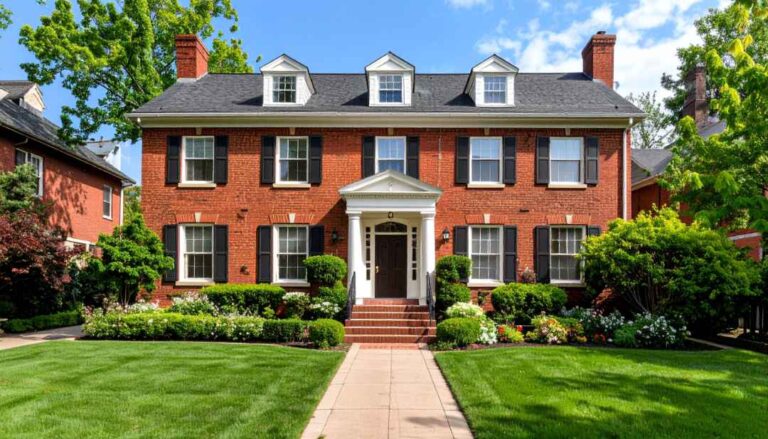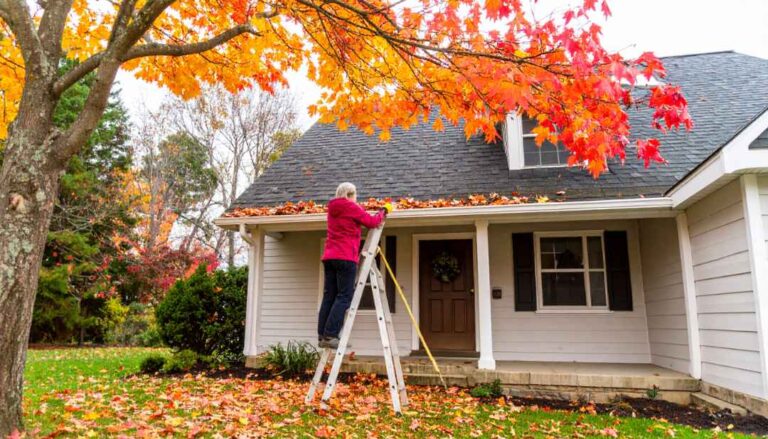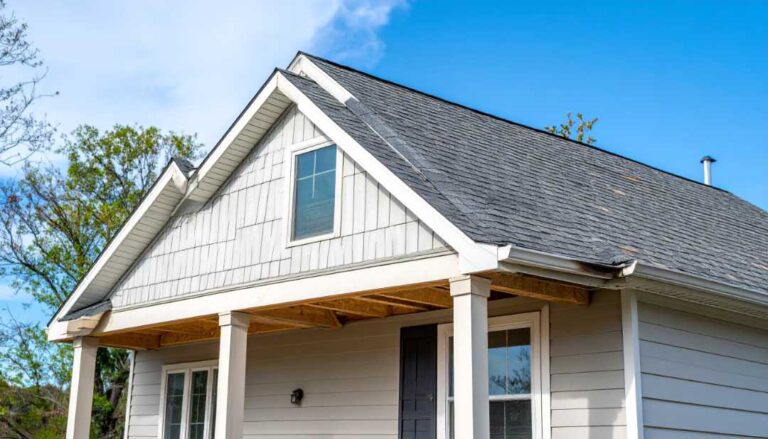When you think about the health of your roof, your mind probably jumps to shingles, flashing, and gutters. While these components are undeniably crucial, there’s a silent, often-overlooked hero working tirelessly beneath your roofline: your attic ventilation system. For homeowners in Illinois, where we experience the full spectrum of weather extremes – from scorching humid summers to frigid, snowy winters – proper attic ventilation isn’t just a good idea; it’s an absolute necessity for preventing costly roof damage, extending your roof’s lifespan, and maintaining a comfortable, energy-efficient home.
At Seidel Exterior Group, we’ve seen firsthand the devastating effects of inadequate attic ventilation. From premature shingle deterioration to dangerous ice dams and sky-high energy bills, the problems stemming from a poorly breathing attic can be extensive and expensive. This comprehensive guide will explain the critical role attic ventilation plays in protecting your Illinois home and how ensuring its efficiency can save you money and headaches in the long run.
Understanding the “Why”: The Science Behind Attic Ventilation
At its core, attic ventilation is about creating a continuous airflow through your attic space. This airflow serves two primary, equally vital purposes:
1. Managing Heat in the Summer: During Illinois summers, the sun beats down on your roof, heating your shingles and transferring that heat into your attic. Without proper ventilation, this trapped heat can reach extreme temperatures, sometimes exceeding 150 degrees Fahrenheit. This superheated air then radiates downwards into your living spaces, forcing your air conditioning system to work overtime, leading to:
- Higher Energy Bills: Your AC struggles to keep your home cool against the radiant heat from the attic, significantly increasing your electricity consumption.
- Premature Shingle Aging: Excessive heat can “bake” your asphalt shingles, causing them to dry out, become brittle, curl, crack, and lose their protective granules at an accelerated rate. This drastically shortens your roof’s lifespan, leading to early replacement.
- Sagging Roof Deck: Prolonged exposure to extreme heat can also warp and degrade the plywood or OSB roof deck, potentially leading to a sagging roofline over time.
- Degraded Insulation Performance: High attic temperatures can reduce the effectiveness of certain types of insulation.
2. Managing Moisture in the Winter: Winter in Illinois brings its own set of challenges. As warm, moist air from your living spaces rises and escapes into the attic (through ceiling penetrations, recessed lights, attic hatches, etc.), it encounters the cold underside of your roof deck. Without adequate ventilation to carry this moisture out, it condenses, forming liquid water or frost on the roof sheathing, rafters, and insulation. This leads to:
- Mold and Mildew Growth: The damp, dark environment of a poorly ventilated attic is a perfect breeding ground for mold and mildew. This can lead to unhealthy indoor air quality, musty odors, and can cause significant damage to wood framing and insulation. Mold remediation can be a very costly and involved process.
- Wood Rot: Consistent moisture can cause the structural wood components of your roof (rafters, trusses, roof deck) to rot, compromising the integrity of your entire roof system.
- Damaged Insulation: When insulation becomes damp or wet, it loses its ability to insulate effectively. This means your heated air escapes more easily, leading to higher heating bills and an uncomfortable home. Wet insulation can also compact and settle, further reducing its R-value.
- Ice Dam Formation: This is perhaps the most significant winter threat to Illinois roofs. Ice dams occur when heat from your home warms the roof deck, melting snow from the middle of the roof. This meltwater then flows down to the colder eaves (where there’s no heat transfer from the attic), refreezes, and forms a ridge of ice. This ice dam prevents subsequent meltwater from draining, causing it to back up under your shingles, seep into your home, and cause severe water damage to ceilings, walls, and insulation. Proper attic ventilation keeps the entire roof deck uniformly cold, preventing premature snowmelt and thus preventing ice dams.
The Components of a Balanced Attic Ventilation System
Effective attic ventilation relies on a balanced system of intake and exhaust vents. It’s not enough to have just one type; both are essential for creating continuous airflow.
Intake Vents (Lower on the Roof/Eaves): These vents allow cooler, fresh air to enter the attic.
- Soffit Vents: Located in the soffits (the underside of the eaves that extend beyond the exterior walls). These are the most common and effective intake vents.
- Undereave Vents: Similar to soffit vents, providing intake airflow.
- Gable Vents (limited use): While they can provide some cross-ventilation in attics with no soffits, they are less effective at creating a continuous flow across the entire roof deck, especially when used alone or with ridge vents.
Exhaust Vents (Higher on the Roof/Ridge): These vents allow warm, moist air to escape the attic.
- Ridge Vents: Installed along the peak (ridge) of the roof, these are highly effective because warm air naturally rises. They offer a continuous, inconspicuous line of ventilation.
- Static/Box Vents: Individual, non-mechanical vents installed at intervals across the upper portion of the roof.
- Turbine Vents: Wind-driven vents that spin to draw air out of the attic. Their effectiveness depends on wind speed.
- Powered/Electric Vents: Mechanically driven fans that actively pull air out of the attic. While effective, they consume electricity and can sometimes depressurize the attic, potentially drawing conditioned air from the living space if not properly installed and balanced.
The key is a balanced system, meaning roughly equal amounts of intake and exhaust ventilation. Without sufficient intake, exhaust vents will struggle to pull air in, and without sufficient exhaust, heat and moisture will remain trapped.
Signs of Poor Attic Ventilation
How can you tell if your Illinois home is suffering from inadequate attic ventilation? Keep an eye out for these warning signs:
- Excessively High Energy Bills: If your AC runs constantly in summer or your furnace works overtime in winter, and your insulation is adequate, poor ventilation might be the culprit.
- Premature Shingle Deterioration: If your asphalt shingles are curling, cracking, blistering, or losing granules prematurely (before their expected lifespan), especially on the sunny side of your home, inadequate ventilation is a likely cause.
- Ice Dams in Winter: Large ridges of ice forming along your eaves during snowy periods are a classic sign of heat escaping into the attic and melting snow, then refreezing.
- Mold or Mildew in the Attic: Any visible growth on rafters, sheathing, or insulation is a clear indicator of a moisture problem.
- Frost in the Attic in Winter: On cold days, look for frost accumulation on the underside of your roof deck. This is frozen condensation.
- Musty Odors in the Attic or Upper Floors: A persistent damp or musty smell suggests moisture and potential mold growth.
- Sagging Roof Deck: While less common for ventilation alone, combined with other factors, excessive heat and moisture can contribute to the warping and sagging of your roof’s sheathing.
The Seidel Exterior Group Difference: Your Illinois Ventilation Experts
At Seidel Exterior Group, we don’t just replace roofs; we provide comprehensive roofing solutions that address the underlying causes of damage. When we inspect your roof, we always include an assessment of your attic ventilation system. We understand that a new roof installed over a poorly ventilated attic is destined for premature failure.
Our certified roofing professionals can:
- Conduct a Thorough Ventilation Assessment: We’ll examine your existing intake and exhaust systems, measure your attic space, and determine if your ventilation meets industry standards and the specific needs of your Illinois home.
- Identify and Rectify Problems: Whether it’s blocked soffit vents, insufficient exhaust, or an imbalanced system, we can recommend and implement the most effective solutions.
- Install High-Quality Ventilation Products: We use only durable, high-performance ventilation products designed to withstand Illinois weather and provide optimal airflow. This often includes installing continuous ridge vents paired with adequate soffit ventilation for a balanced and efficient system.
- Educate Homeowners: We believe in empowering our clients with knowledge, explaining the “why” behind our recommendations so you can make informed decisions about your home.
Investing in Ventilation: An Investment in Your Home’s Future
Ensuring your attic is properly ventilated is one of the most cost-effective ways to protect your roofing investment. By doing so, you can expect to:
- Extend Your Roof’s Lifespan: Preventing premature shingle aging and structural degradation means your roof will last longer, delaying the need for a costly replacement.
- Lower Energy Bills: A well-ventilated attic reduces the burden on your HVAC system, leading to significant savings on your heating and cooling costs.
- Prevent Costly Damage: Avoiding issues like mold growth, wood rot, and severe ice damming saves you from expensive repairs and potential health hazards.
- Improve Indoor Air Quality: Reduced moisture and mold growth in the attic contribute to a healthier living environment.
- Maintain Home Comfort: A properly ventilated attic helps maintain more consistent temperatures throughout your home.
Don’t let your attic be the unsung, and often unseen, cause of your roof’s demise. If you suspect your Illinois home has inadequate attic ventilation, or if you’re planning a roof replacement, it’s crucial to address this vital component.
Contact Seidel Exterior Group today for a comprehensive roof and attic ventilation inspection. Let us ensure your home’s unsung hero is performing at its best, protecting your roof, saving you money, and keeping your family comfortable for years to come. Your Illinois home deserves the best defense against the elements, from the shingles down to the very air flowing in your attic.



